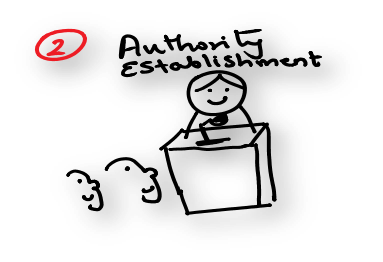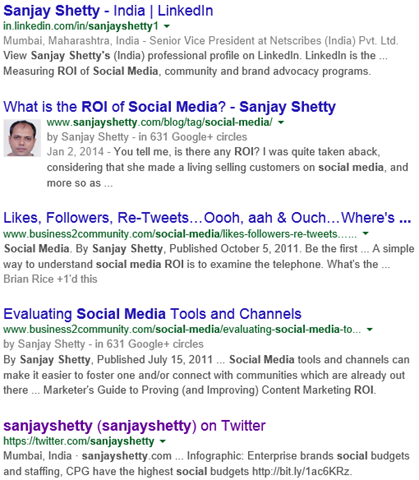How to increase the presence and equity of key spokespeople, stakeholders, in the digital space, is a key concern for Marketing and Communications specialists today.
The two elements of Individual Reputation Management
Building a personal online reputation involves two aspects.
- Stakeholder Identity Establishment
- Stakeholder Authority Establishment
Stakeholder identity establishment ensures that when people search for the name of the stakeholder that stakeholders information comes up easily.
Stakeholder authority establishment ensures that when people search for that particular practice, industry or theme in which the stakeholder wants to be looked upon as an authority, that stakeholders relevant information comes up.
How to Establish Stakeholder Identity or Personal SEO
To ensures that when people search for the name of the individual or stakeholder that stakeholders information comes up easily means one has to establish that persons name presence across various online information sources such as directories, social media networks, repositories.
1. The first place to start – Individual domain name
Nothing beats having your own domain name for e.g. www.sanjayshetty.com. Today there are a multitude of domain extensions available. Grab your name. An owned property provides the most flexibility in maintaining the most detailed version of a persons identity. Make sure the profile is as detailed as possible here. Moreover social networks and other locations online may disappear in time and an owned property gives you absolute control. There are no restrictions on the amount of content you can put up for a stakeholder or the links to other profiles or sites.
2. Make your content feel personal – Google Authorship
You can link content you publish to your Google+ profile. This obviously means creating a Google+ profile first.
This helps in two ways it shows people who you are and ensures that Google knows when you publish more information. This is a must do. For each stakeholder or spokesperson ensure that you have a completely filled Google+ profile and content authorship is clearly established.
3. Establish your social presence
Ensure you have your name established on popular social sites beginning with Google Plus which enables you to tie in your id to the content you produce. You’d need to figure out what is important but the usual suspects are LinkedIn and Twitter. LinkedIn profiles rank high make sure it’s complete, same goes for Twitter.
If you contribute to third party websites, make sure you fill your profiles out there. The bio pages for guest bloggers often contribute to rank at the top of page one in searches for the authors name. Contributing on a popular site can cause the profile to be ranked high for a long time. One more important point here is to ensure that each of your social profiles link back to your website or your blog.
4. Establish your presence on Social Repositories
Sites like Quora the question and answer site, presentation repositories like Slideshare and Scribd are great at building and establishing your identity.
All the above are just ways to establish your identity. Its kind of like staking claim of your own name in cyberspace. This however is just the first step in building your reputation online.
What’s Next?
In part 2 of this article I’m going to cover how to take this to the next level and How to Establish Key Stakeholder Authority and I’ll also cover challenges in online reputation management.
References:
http://spinsucks.com/communication/personal-seo/
https://brandyourself.com/online-reputation-management
Read more:




